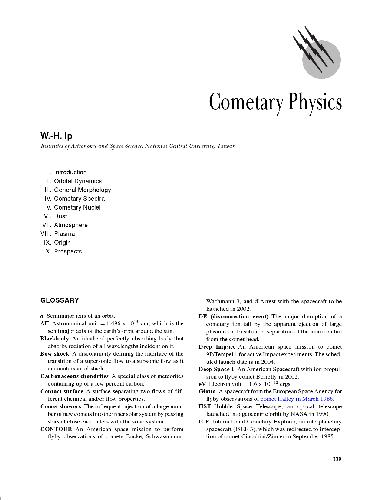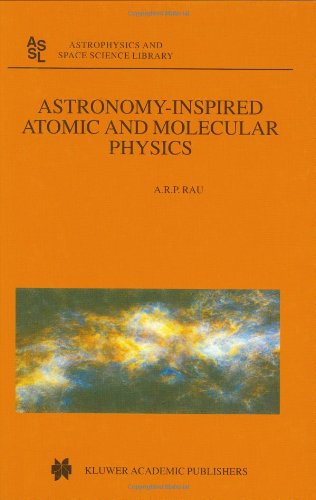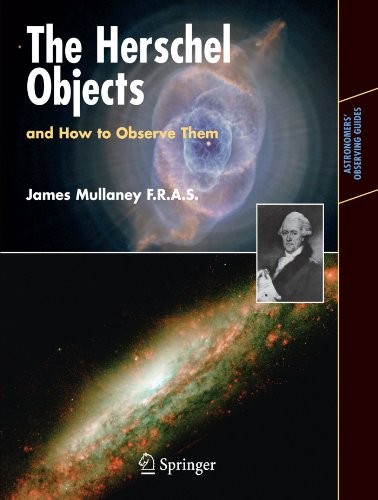Robert A. Meyers (Editor-in-Chief)
Table of contents :
Glossary……Page 1
Introduction……Page 2
Orbital Dynamics……Page 4
General Morphology……Page 8
Surface Sublimation……Page 9
Dust Coma and Mantle……Page 10
Dust Tails……Page 11
Cometary Spectra……Page 12
Size……Page 13
Surface Features……Page 15
Internal Structure……Page 16
Composition……Page 17
Dynamics……Page 18
Thermal Emission……Page 19
Comet Halley……Page 20
Coma Expansion……Page 22
The Ionosphere……Page 25
Cometary Bow Shock and the Upstream Region……Page 28
Electrostatic Charging……Page 31
Origin……Page 32
Prospects……Page 35
References……Page 36
Glossary……Page 37
Mechanics……Page 38
Scaling……Page 39
Observations……Page 41
The Solar System Cratering Record……Page 43
The Impact Crater Revolution……Page 44
References……Page 46
Glossary……Page 47
Analysis of Lunar Rock Samples……Page 48
Impact Processes……Page 49
Highland Breccias and Ancient Rocks……Page 52
Lunar Surface History……Page 53
Siderophiles……Page 54
Magnetic Field……Page 55
Solar Record……Page 56
Crustal Formation and Early Differentiation……Page 57
The Origin of Moon……Page 58
References……Page 59
Glossary……Page 60
General……Page 61
History of the Field……Page 62
Nature of Cosmic Rays……Page 63
Interaction Processes and Products……Page 64
Tracks……Page 65
Nuclides……Page 66
Tracks……Page 69
Nuclides……Page 70
Thermoluminescence……Page 72
Nuclides……Page 73
Heavy Nuclei……Page 76
Spatial Variations……Page 77
Temporal Variations……Page 78
Preatmospheric Geometries and Meteorite Orbits……Page 80
Complex Histories……Page 82
Exposure Ages……Page 84
References……Page 86
Glossary……Page 87
Size, Shape, and Distance……Page 88
The Motion of the Moon in the Sky……Page 89
Eclipses……Page 90
The Temperature of the Moon……Page 91
Manned Exploration……Page 92
The Lunar Uplands……Page 93
Craters……Page 94
The Lunar Interior……Page 95
Later Evolution……Page 97
References……Page 98
Glossary……Page 99
Formation of the Planets and their Atmospheres……Page 100
Earth……Page 103
Venus……Page 105
Mars……Page 110
The Outer Planets……Page 117
References……Page 127
Glossary……Page 128
Introduction……Page 129
Measurement Objectives……Page 130
Mission Planning and Data Acquisition……Page 131
Analyses……Page 132
Evidence from the Cratering Record……Page 133
Resurfacing of the Galilean Satellites Europa and Io……Page 140
Introduction……Page 135
Formation of the Lunar Terrae Crust……Page 136
Tectonism and Volcanism on Venus……Page 137
Evidence from Elemental and Isotopic Atmospheric Abundances……Page 141
Polar Caps and Layered Deposits……Page 142
Other Geological Evidence……Page 143
Current and Past Climates of Mars……Page 144
The Future of Planetary Geology……Page 146
References……Page 147
Glossary……Page 148
Discovery……Page 151
Physical and Dynamic Properties……Page 152
Evolution……Page 153
Radiometry……Page 154
Imaging Observations……Page 155
Early History of the Moon……Page 157
Nature of the Lunar Surface……Page 158
Io……Page 159
Callisto……Page 161
The Medium Sized Icy Satellites: Rhea, Dione, Tethys Mimas, Enceladus, and Iapetus……Page 163
Titan……Page 165
The Small Satellites……Page 166
The Satellites of Uranus……Page 170
The Satellites of Neptune……Page 172
References……Page 174
Glossary……Page 175
Introduction……Page 176
Asteroid Belts and Planet-Crossing Asteroids……Page 177
Kirkwood Gaps……Page 178
Occultation Diameters……Page 179
Shapes and Rotation Rates……Page 180
Taxonomy……Page 181
Mineralogical Composition and Chemistry……Page 182
Introduction……Page 183
Structure……Page 184
Tails……Page 185
Areas of Study……Page 186
References……Page 187
Glossary……Page 188
General Physical Characteristics……Page 189
Structure and Composition……Page 190
Magnetic Field Motions……Page 194
The corona…….Page 195
Motions in the Solar Interior and Photosphere……Page 196
Solar Atmosphere and Activity……Page 197
Sunspot Cycle……Page 198
The Role of Internal Magnetic Fields……Page 201
Solar Flares……Page 202
Coronal Mass Ejections……Page 204
Source and Structure of the Solar Wind……Page 207
References……Page 208
Glossary……Page 209
Overview of the Solar System……Page 210
Dynamics and Structure……Page 216
The Terrestrial Planets……Page 219
The Moon……Page 221
The Giant Planets……Page 222
Satellites……Page 224
Rings……Page 225
Asteroids, Comets, and Meteorites……Page 226
Origin of the Solar System……Page 229
References……Page 230
Glossary……Page 231
Sources of Magnetic Fields……Page 233
Charged Particle Motion in Electric and Magnetic Fields……Page 234
The Physics of Plasmas……Page 236
Conductivity and Electric Field Sources……Page 238
The Solar Wind……Page 239
Plasma Interactions with Unmagnetized Atmosphereless Bodies……Page 240
Solar Wind Interaction with Mercury……Page 241
Solar Wind Interaction with the Earth……Page 242
Solar Wind Interaction with Jupiter……Page 245
Interacting Magnetospheres of Jupiter and Ganymede……Page 246
Solar Wind Interaction with Venus……Page 247
Solar Wind Interaction with Comets……Page 248
Plasma Interaction with Io……Page 249
Concluding Remarks……Page 250
References……Page 251







Reviews
There are no reviews yet.